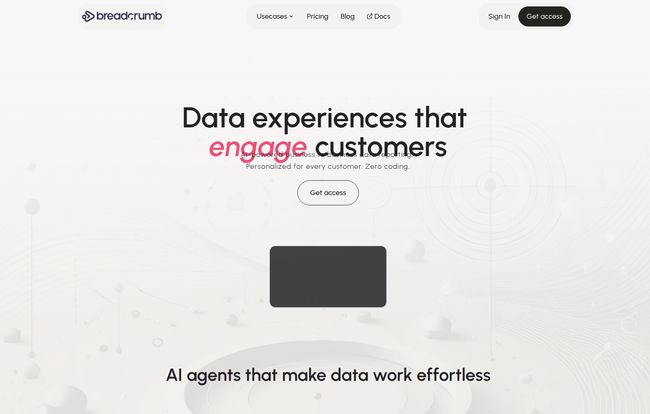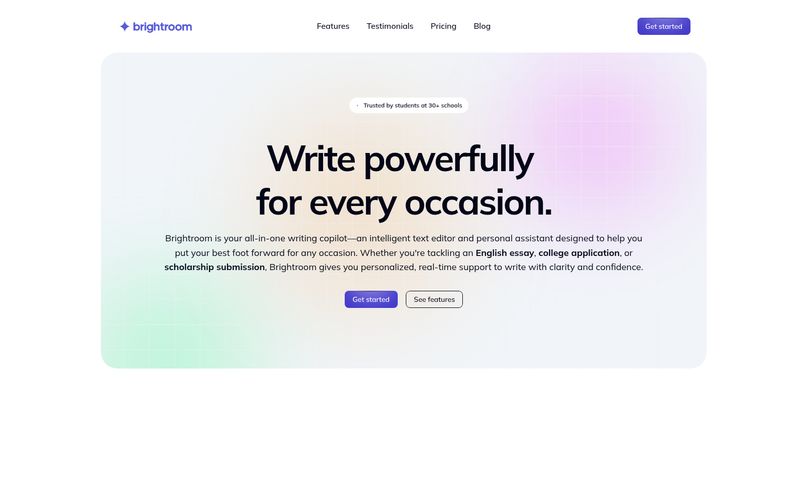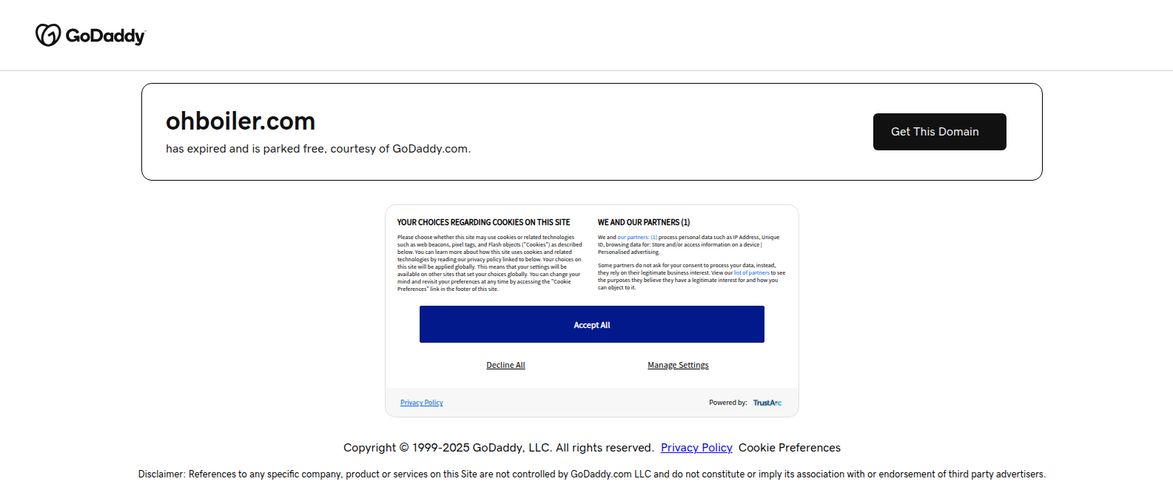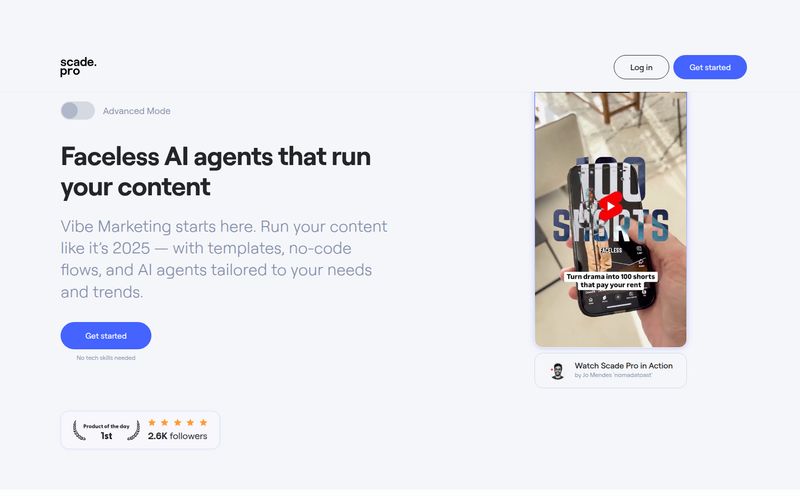If I have to wrangle one more CSV file or try to make a pivot table look remotely presentable for a client, I might just throw my laptop out the window. For years, the world of data analytics has been a bit of a members-only club. You either knew SQL, Python, or had the patience of a saint to master something like Tableau... or you were out of luck, stuck with clunky spreadsheets.
We’ve all been there. Spending hours, literal hours, cleaning data, merging sheets, and then trying to build a chart that doesn’t look like it was made in 1998. It’s the unglamorous side of digital marketing and business management that no one talks about at conferences.
So, when a tool like Breadcrumb.ai comes along, waving a big shiny flag that says “No-code AI-powered data analytics,” my inner skeptic and my overworked inner data-janitor both sit up and pay attention. Could this really be the tool that lets us talk to our data without needing a PhD in computer science? I had to find out.
So, What Exactly is Breadcrumb.ai?
Imagine you have a super-smart intern. You can just hand them a pile of messy spreadsheets, say “figure out our sales trends by region and make it look pretty for the client meeting,” and they just… do it. In minutes. That’s the elevator pitch for Breadcrumb.ai.
It’s a platform that uses AI agents to do the heavy lifting of data work. You connect your data sources—spreadsheets for now on the lower tiers, but more options on higher plans—and the AI gets to work. It combines, analyzes, and then builds out reports and dashboards. The real kicker? You can embed these live, interactive reports directly into your website, your SaaS product, or your client portal. No more exporting static PDFs. Hallelujah.

Visit Breadcrumb.ai
This isn’t just about making charts. It’s about automating the entire personalized reporting process, so every client or team member gets the specific insights they need without you manually creating 50 different versions of the same report. It's a pretty bold promise.
The Core Features That Actually Matter
A feature list is just a list until you see how it actually solves a problem. Here’s my take on Breadcrumb's heavy hitters.
AI-Powered Analysis: Your Personal Data Whisperer
The term “AI-powered” is thrown around so much it’s almost lost all meaning. In this case, though, it’s the core of the product. Breadcrumb claims its AI handles the nasty bits: data ingestion, cleaning, and modeling. This is the stuff that can take up 80% of your time in a traditional analytics project. Automating it means you can jump straight to the fun part: finding the insights. The platform’s stats boast a 100% reduction in time spent on data wrangling, which, if even half true, is a massive win.
Automated and Embeddable Reports
For me, this is the main event. Creating a report is one thing. Creating a report that automatically updates and can be seamlessly embedded into a customer’s dashboard is another. Think about the value this adds for a SaaS company. Instead of just having a generic analytics page, you could provide each customer with a personalized, embedded dashboard showing their specific usage data, ROI, or performance metrics. It’s a huge step up in customer experience and can be a powerful retention tool.
Talking to Your Data with Natural Language
This is where it gets a little bit sci-fi. Breadcrumb allows for “Insight Exploration” where you can essentially ask questions in plain English. Instead of building a complex filter, you could theoretically just ask, “Show me top-performing products in the Northeast last quarter.” This lowers the barrier to entry to almost zero. Anyone who can type a question can, in theory, become a data analyst. It's a fascinating concept that I think we'll see a lot more of in the BI space.
Let's Talk Turkey: The Pricing Breakdown
Alright, this is where things get real. A tool can have all the bells and whistles in the world, but if the price is wrong, it’s a non-starter. Breadcrumb.ai has a tiered structure that’s... interesting. Here's how it shakes out:
| Plan | Price | Best For | Key Limits |
|---|---|---|---|
| Free / Starter | Free | Testing the waters | 1 spreadsheet, 100 "magic actions"/mo |
| Basic | $30 / month | Solo consultants, small managers | 2 spreadsheets, 100 "magic actions"/mo |
| Growth | $500 / month | Growing businesses, agencies | 5 sources, Unlimited actions, 10 collaborators |
| Enterprise | Custom | Large organizations with complex needs | Custom integrations, API access, etc. |
The Free and Basic Tiers: Just a Taste
The Free and Basic plans feel more like extended trials. The limit of 100 "magic actions" (which I assume is any AI-driven task like generating a chart or insight) is pretty low. You'll burn through that quickly if you're doing any serious work. They're great for getting a feel for the interface, but not for running your business on.
The Growth Plan: The Real Deal
Okay, let's address the elephant in teh room. The jump from $30 to $500 is... steep. This is not a tool for hobbyists. The Growth plan is clearly aimed at businesses where data reporting is a core function. Think of marketing agencies managing multiple clients or SaaS platforms building out customer-facing dashboards. For them, $500 a month could easily be justified by the time saved and the enhanced client value. If it automates the work of a part-time data analyst, it pays for itself. But for a smaller operation, that price point will definitely make you think twice.
The Good, The Bad, and The Data-Driven
No tool is perfect. After playing around with it and analyzing their pitch, here’s my honest breakdown.
The Good Stuff: The biggest pro is its sheer simplicity and speed. The no-code approach genuinely democratizes data analysis. It empowers account managers, marketers, and founders to get answers from their data without needing to file a ticket with engineering. The embeddable reports are beautifully designed and a potential game-changer for client retention and user engagement.
The Not-So-Good: The pricing model is the most obvious hurdle. That $500/month leap will exclude a lot of smaller businesses and solopreneurs. Beyond that, there's the 'black box' element of AI. If you're a data purist who loves to control every join and transformation, the reliance on AI to do it for you might feel like a loss of control. You have to trust that the AI is getting it right. Also, it’s only as good as the data you feed it; it’s not a magic wand for terribly kept records.
Who Is This Actually For?
After digging in, I have a pretty clear picture of the ideal Breadcrumb.ai user.
- SaaS Companies: If you want to offer powerful, personalized in-app analytics to your users without building a whole data team, this is tailor-made for you.
- Marketing & SEO Agencies: Imagine automating monthly client reports. Connect their Google Analytics, Ads data, and sales CRM, and have a beautiful, live dashboard ready to go. This could save dozens of hours a month.
- Product Managers: Quickly analyze user behavior and product metrics without needing to wait for a developer. Ask questions and get answers in near real-time.
- Business Consultants: You can quickly generate professional, data-backed reports for clients without spending days in Excel.
Who is it not for? Probably data scientists who want granular control over their models or very small businesses who can't justify the Growth plan's price tag.
Frequently Asked Questions About Breadcrumb.ai
What are "magic actions"?
This seems to be their term for any AI-driven task. Generating a chart, creating a new insight, or transforming a data set likely counts as one action. The lower-tier plans are limited, while the Growth plan offers unlimited actions.
How secure is my data?
According to their site, they take security seriously, offering advanced controls and on-premise deployment for enterprise clients. As with any cloud tool, you should review their specific security and privacy policies. For sensitive data, this is a must-read.
Can I customize the look of embedded reports?
Yes, custom branding is listed as an Enterprise feature. It's likely that the lower tiers have some customization but full white-labeling is reserved for top-tier clients.
How does it connect to different data sources?
The lower plans focus on spreadsheets (CSV, Excel). The Growth plan expands this to 5 sources, including popular ones like Google Drive, Dropbox, and Stripe. The Enterprise plan offers custom integrations, which could include databases or other APIs.
Is this a replacement for a tool like Tableau or Power BI?
For some use cases, yes. For others, no. If your primary need is creating beautiful, automated, embeddable reports for clients with minimal fuss, it could absolutely replace them. If you're a dedicated BI professional doing extremely complex internal analysis, you might find it limiting. It solves a different problem—speed and ease-of-use over infinite complexity.
My Final Verdict on Breadcrumb.ai
So, is Breadcrumb.ai the answer to all our data prayers? Maybe. It's not a silver bullet, but it's a genuinely exciting step in the right direction. It represents a shift away from complex, gatekept tools towards more accessible, AI-driven platforms.
For the right company—one that values speed, client-facing presentation, and empowering non-technical teams—I think Breadcrumb.ai could be a phenomenal investment. The ability to turn raw data into a valuable, embeddable asset for customers is incredibly powerful. The pricing is a serious consideration, but if you reframe it as the cost of saving time and improving client relationships, that $500/month on the Growth plan starts to make a lot more sense.
It's a strong contender in the modern BI space. If you're drowning in spreadsheets and your job involves creating reports for other people, you owe it to yourself to at least check out their free trial. It might just save you from tossing your computer out the window.
Reference and Sources
- Breadcrumb.ai Official Website
- Breadcrumb.ai Pricing Page
- The Importance of Data in Modern SEO Reporting (via Search Engine Land)



